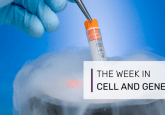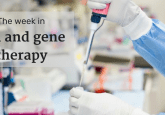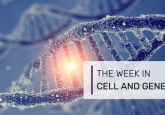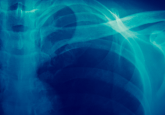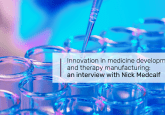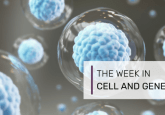Preserving flexibility: an interview with Jenny Stjernberg

In this interview, we spoke to Jenny Stjernberg, Commercial Director, EMEA at ScaleReady (MN, USA), about the significance of cryopreservation in every step of the cell and gene therapy workflow, from starting materials to final therapeutic products.
Jenny also explains the vital considerations that pave the path to success, including the advantages of standardizing cryopreservation processes and how to achieve standardization through automation to ensure consistency and efficiency.
In your presentation at ISCT 2023, you noted that all six commercially approved CAR-T cell therapies are cryopreserved prior to infusion. Why is cryopreservation important in cell and gene therapy?
It is extremely important in centralized manufacturing as after the cell therapy product has been made it needs to be shipped back to the patient. To ensure cells are viable and functional after shipping, they will need to be frozen down.
Regarding decentralized, it can be important to have the ability to freeze down cells upstream and downstream of manufacturing, depending on the state of the patient.
What are the most important things to consider for successful cryopreservation of a final cell therapy product?
There are several elements that are important. We need to work with speed to limit the total time cells are exposed to DMSO before being frozen. We need to add DMSO when cells are cold and make sure that the DMSO is evenly distributed throughout the suspension. We also need to make sure that we are aliquoting the cells into containers that are appropriate for the next steps. And there are a lot of things to consider when it comes to aliquoting, for example, if you want to have a specific concentration of cells, if you want to have a specific volume, if you want to have a dose that is per kilo or per patient, etc. So, it’s important to keep the flexibility there.
What benefits can be achieved through the automation of cryopreservation in fill/finish steps?
All of those things that I just mentioned can be automated. In doing so, we will get to the final product quicker and ultimately get the therapy to the patient quicker. It will also increase accuracy, and we are taking away the risk of manual calculation errors. So, a device can do all these things for us with minimum input. Importantly, we should only automate after first simplifying the process steps. Injecting automation for automation’s sake will continue to “bake in” complexities and therefore, not further de-risk or strip out cost inefficiencies. Once simplification is complete, automation can achieve repeatability and consistency from run to run.
You also discuss the cryopreservation of leukapheresis starting materials. What are the benefits of standardizing cryopreservation processes for starting materials?
Standardizing it will mean that we can have more centers that can do the apheresis processing. Today, we are limited to just a few centers. But if we have a standardized process, we can have more centers collecting the products for downstream manufacturing. The other benefit is that if we are freezing down the starting material, we are not limited to timing for the next step in the process. So, depending on the patient’s physical health as well as the staff that are going to do the manufacturing, we are removing those potential challenges.
In your opinion what does the future of cell therapy processing workflows look like?
I don’t think there is one workflow that will work for everything. We’re going to do different things for different manufacturing processes, different cell types, autologous, allogeneic, etc. There are so many different manufacturing processes and so many exciting innovations like AI that we have yet to fully investigate. We are not going to standardize it to one-solution-fits-all. It’s going to be multiple solutions that, within themselves, are standardized. Maintaining the flexibility to go with small volumes, larger volumes, frozen, fresh, etc., is very important in keeping all those possibilities open. It is still very early days in cell therapy today.
One thing that will be constant is the possibility of further optimization after reaching clinical scale. Perhaps cells expanded for fewer days demonstrate higher efficacy and a higher initial seeding density needs to be investigated. Perhaps a new reagent needs to be evaluated for use. These optimization activities may substantially improve the manufacturing process but should not be completed at full scale, which drains limited resources. Having a manufacturing process capable of scaling up and down with reproducible results is critical for the process development life cycle.
Things will definitely change and we don’t know what is going to happen in five or 10 years so it’s also important that we don’t lock down our inflexible processes today and block off potential opportunities later down the line. I can’t stress enough the need for programs that are future-proofed, meaning flexible and modularized. Flexibility is the key cornerstone to successful manufacturing processes now and in the future.
How is ScaleReady positioned to offer solutions in the ever-evolving field of cell therapy?
We are uniquely positioned in that our business model and product offerings provide flexibility for our clients to work at small and large scales. Our clients have the possibility to scale, not only up and out but also down again. This unique capability is also critical in the cell and gene therapy field, as it enables cell and gene therapy programs to return to the research bench at minimal cost and effort. Scaling down facilitates the speed of scale-up and scale-out with streamlined processes that improve patient access to these life-saving treatments.
Meet the interviewee

Jenny Stjernberg, Commercial Director, EMEA at ScaleReady (MN, USA)
Jenny Stjernberg leads Commercial Operations as EMEA Director for ScaleReady as part of the Global Leadership Team. In her role, she collaborates closely with the US Commercial Team and, together, they set the tone globally, enabling ScaleReady to challenge the way cell and gene therapy programs operate to adopt a simpler and consistent solution that centers around platform, process, and therefore, product continuity.
Prior to joining ScaleReady, Jenny spent five years successfully managing large sales and marketing teams within several cell and gene therapy companies. This, combined with her first-hand experience as a scientist and clinical account manager, has enabled her to gain a unique global perspective that spans the needs for academic research process development and commercial manufacturing operations.
Jenny’s career-long background in science began by obtaining her Master’s Degree in Medical Biology from Linköping University in Sweden, alongside a PhD in Medical Science, studying how cell-cell interactions in the bone marrow support the hematopoietic progenitors in their lineage decision.
Disclaimer
The opinions expressed in this interview are those of the interviewee and do not necessarily reflect the views of RegMedNet or Future Science Group.
In association with:

